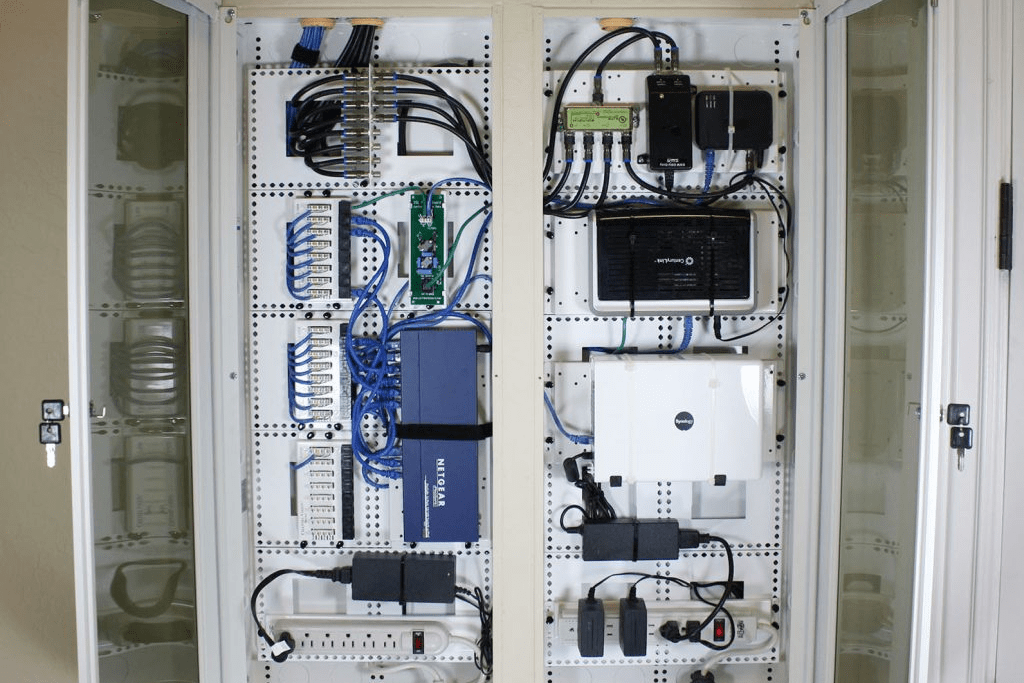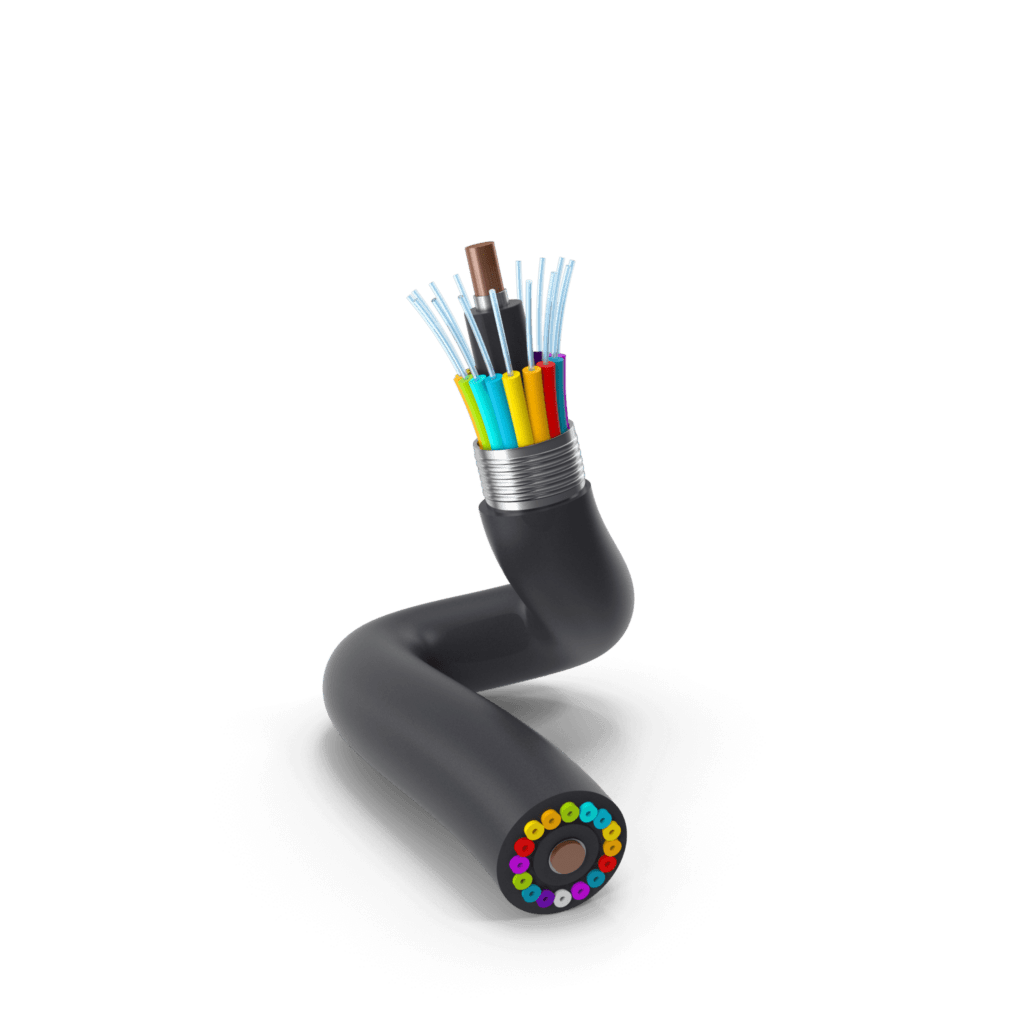
I’ve been helping people to build smart homes for years. I’ve also been working on my own smart home for over a decade. As technology changes, and I learn more, I often reflect on what I would do to build the perfect smart home from scratch if I were doing it today. Let’s discuss seven key steps I would take.
Table of Contents
The perfect smart home would have Cat 6a cable everywhere
I know that Wi-Fi has improved significantly and that most devices work via Wi-Fi. However, Ethernet connections are still more reliable. Also, having more devices with wired network connections improves your Wi-Fi by reducing the load on your Wi-Fi network.
When I say run Cat 6a everywhere, I mean everywhere. Run it to your dining room, your living room, on the walls where you may put a smart TV — anywhere you think you might put a stationary device. It’s better to have the network port there and not use it at first than to wish you had it there later.
Create a modest central server room

In the perfect smart home, all of that Cat 6a you ran should terminate at a switch in a central location, and it would be great if that central location was in some kind of server room. The server room should be big enough to house a rack that can hold devices like servers, a router, network switches, and a NAS. It’s also where the Internet connection going into your home should go.
A centralized server room makes it easier to maintain and make changes to your home network. You can also efficiently use UPS device(s) and surge protection to protect all of your key network infrastructure. Also, you can keep potential eyesores and noisy fans and disks hidden away.
The server room should also allow for some type of cooling. All of those devices together can generate a lot of heat, and heat is the enemy of electrical device longevity. You should plan for ventilation solutions, self-contained cooling solutions, or other in-room cooling solutions depending on the size and location of your server room, as well as your budget.
Man, do I wish I had a server room now. My office doubles as a server room now, and it isn’t exactly ideal. My office is now the hottest room and the house, and it is not comfortable to close the door for any length of time when it’s hot.

Plan strategic spots for smart speakers and smart displays
A perfect smart home is going to contain one or more voice assistants in the form of smart speakers and/or smart displays. If you put them in the wrong place, however, they can be very annoying. Don’t place them near TVs or other places where there is a lot of ambient noise, or the smart assistants will have a hard time responding to your commands.
A few other considerations for placement include:
- Locations where the Wi-Fi is strong
- Locations where commands are really convenient (like a bedroom where you don’t want to get up to turn the lights off)
- Keep away from places where commands can be shouted from outside (for security purposes)
- Place them near outlets. I prefer to plug in smart speakers with wall mounts like this or this to make the installation cleaner.
Make sure fiber Internet is available at my home

Honestly, the next time I buy a home, making sure there is good Internet service to the home is a requirement. At this point, I’d prefer to have fiber service running directly to my home, as I do now.
Internet service to my home is more critical than power, now that I am prepared for outages with a generator. I often work from home, and services (e.g. YouTube TV, Netflix), and the kids’ homework depend on having an Internet connection. So, I like to have a backup cellular solution as well. In a perfect smart home, 5G would be preferred.
Prepare for smart home devices in the yard
I have multiple smart home devices in my yard. Most notably, I have surveillance cameras and LEDs. The LEDs would have been easier to install if I ran power to a few locations (like my fence, and more outlets on my roofline). Also, they require stable Wi-Fi, so a strategically placed outdoor Wi-Fi access point would have helped, or running Ethernet and using controllers that can use Ethernet connections.
All of my outdoor surveillance cameras require Wi-Fi and power. Not all of them are near power outlets, so I have to run extension cords. It would have been a lot better and cleaner to have PoE cameras. I recommend having PoE outlets near where you’d want to place outdoor surveillance cameras.
Wire for indoor and outdoor security cameras
I covered most of this topic in the previous section, but there are a couple additional considerations:
- Use PoE for indoor surveillance cameras as well. Make sure the PoE connections are convenient to where you want to place the cameras. PoE will also help reduce the load on your Wi-Fi network.
- If you don’t use PoE, make sure Wi-Fi is strong and power outlets are close in the locations where you want to place your security cameras.
Strategically place PoE access points

Wi-Fi is the backbone of the perfect smart home. Assuming, you’re using PoE, make sure to place Ethernet jacks in strategic places in your home. This may be a central wall or ceiling on each floor in your home. The right location will largely depend on the size and design of your home. You want to make sure you place your Wi-Fi access points in locations that will give strong Wi-Fi throughout your entire home.
Even if you aren’t using PoE, you should still add an Ethernet outlet near each location. Another alternative is to use a mesh Wi-Fi system. But if I were building my perfect smart home I’d go with Wi-Fi access points for more flexibility in models and upgrading/replacing individual units over time.
Use a router that supports 2.5 Gbps WAN connections and has dual WAN
Sure, I don’t need (or even have access to) 2.5 Gbps Internet service right now. But I probably will in the future. Our reliance on the Internet will probably only increase. I would like to be prepared for faster speeds.
Also, as I mentioned earlier, having a backup cellular Internet connection is important. Having a dual WAN router makes switching back and forth between Internet connections when the primary connection fails and recovers a seamless experience.
Segment my network for security from the start

Network segmentation is key to home network security as I’ve described in detail in my book The Home Network Manual and that I explain in detail in my Personal Cybersecurity Protection course. In short, keeping your smart devices, surveillance cameras, and other home network devices on different network segments increases the security of your home, and is especially useful if a device on your network is compromised.
Here’s how I currently implement network segmentation. If I were starting over, I’d properly plan VLANs too.
My perfect smart home uses Home Assistant

My perfect smart home would use the perfect smart home hub for me which is Home Assistant. Home Assistant is the brains behind my smart home. It ties all my devices together and allows me to write hundreds of useful automations that make our lives easier and increase our safety.
Home Assistant continues to improve with every release and supports more and more integrations. Using Home Assistant is the best smart home-related decision I’ve made in the past 5 years.
Final thoughts on the perfect smart home
I’m probably not living in the last home I’ll ever own, so I think about what I’d do differently if I were moving into a new home. These are the top 10 things on my list. I hope they provide you with some inspiration.
What are some things you recommend others consider and plan for when they build their smart home? Let me know in the comments or on Twitter.


